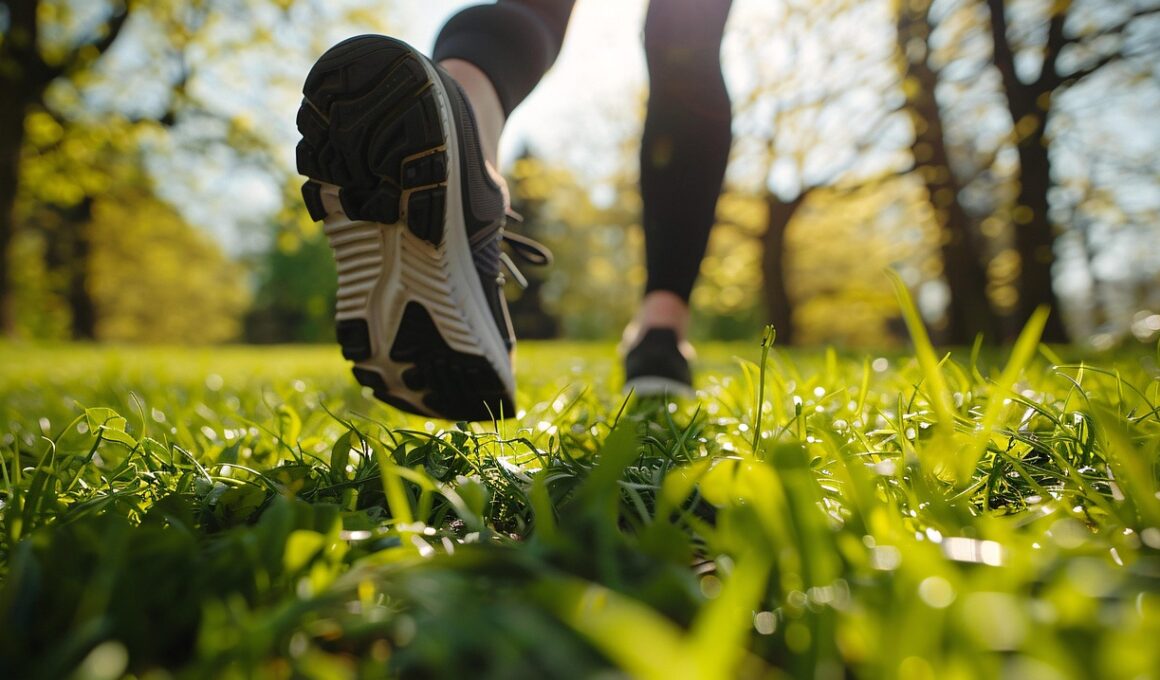How to Prevent Toenail Injuries During Running
Running is a popular sport that brings numerous health benefits, but it also puts a lot of strain on your feet. While runners are typically focused on their cardiovascular fitness, foot injuries, especially toenail problems, often go overlooked. Ingrown toenails, bruised nails, and fungal infections can all arise if proper foot care is ignored. These issues can lead to pain and may sideline a runner for weeks, even months, if not appropriately addressed. Understanding how toenail injuries occur during running is crucial for prevention. Factors like improper footwear and a lack of foot hygiene can increase the risk. Therefore, knowing how to select the right shoes and practices can make a significant difference. We will explore various tips and guidelines that can help runners keep their feet and toenails in prime condition. After all, sustaining any running regimen requires dedicated attention to foot care to avoid sidelining injuries. By incorporating these preventative measures into your routine, you’ll enhance your performance as well as overall enjoyment of running.
Footwear is perhaps the most critical aspect of preventing toenail injuries among runners. Choosing the proper footwear helps to create a suitable running environment for your feet by ensuring they have enough room to breathe and move freely. Runners should consider getting professionally fitted at a specialty running store, where experts can help identify the correct size and type of shoe for their foot shape and running style. A shoe that’s too tight can lead to toenail damage and discomfort, while excessively loose footwear may cause friction and movement issues, resulting in injuries. Selecting shoes designed specifically for running can also provide crucial impact absorption and support. Additionally, different types of shoes accommodate various terrains, such as trails or roads, affecting how your feet interact with them. Alongside fit and style, replacing old shoes is vital. Worn-out shoes lose cushioning and support, increasing the potential for injuries. Regularly monitoring tread wear and investing in new shoes when needed can enhance performance. Remember, the right footwear is fundamental for every runner to maintain healthy toenails and feet.
The Importance of Proper Nail Care
Additionally, maintaining proper nail hygiene is vital in reducing toenail injuries for runners. Regularly trimming toenails can help prevent issues such as ingrown nails, which can cause significant pain and discomfort while running. It’s crucial to keep nails trimmed straight across, as this encourages proper growth and reduces the chance of them curling into the skin. Avoiding excessively long toenails is equally important; not only can they become painful when pressed against the inside of shoes, but they also create an environment conducive to fungal infections. Runners should aim to cut their toenails every couple of weeks. After trimming, it’s beneficial to file any sharp edges to prevent snagging or injury during runs. Additionally, consider using an antifungal nail solution or powder, especially if you are prone to fungal infections, as this can act as a protective measure. Regular foot inspections also play a role in toenail health. By keeping an eye on any changes, you can address any potential issues early. Making nail care routine part of your overall foot care will support healthier toenails.
Another significant factor for runners is foot hygiene. Keeping your feet clean and dry can significantly reduce the chances of toenail injuries and infections. After every run, it’s essential to wash your feet thoroughly with soap and water, ensuring you dry them well, especially between the toes, where moisture can accumulate. Excess moisture can lead to skin irritations and encourage fungal growth, which can complicate toenail health. For runners who sweat heavily, consider using foot powder or moisture-wicking socks designed to keep your feet dry. Changing socks after sweaty runs can also mitigate moisture build-up. Going sockless in certain situations may be tempting, but this can create friction on the toenails, increasing the risk of injury. In addition, foot soaks or treatments with Epsom salts can soothe tired feet while keeping nails healthy. By prioritizing hygiene through regular washing and drying, you can maintain not only nail health and cleanliness but also overall foot wellness, making for a more enjoyable running experience. Truly, foot hygiene is a key component to preventing injury.
Choosing the Right Running Socks
No discussion of foot care for runners is complete without mentioning the importance of the right socks. Wearing the appropriate socks forms a barrier between your feet and footwear, reducing friction, and therefore the likelihood of developing toenail issues. Opt for socks that are designed specifically for running and are made from wicking materials, as these help to draw moisture away from the skin. Cotton socks, while comfortable, trap moisture, which can lead to blistering and toenail issues. Selecting socks that provide cushioning and arch support can enhance comfort during long runs. Additionally, ensure your socks fit correctly; avoid sizes that are too loose, as excess movement can cause blisters and toenail injuries. Double-layered socks are beneficial as they may reduce friction even further. Runners can also consider the height of the socks—higher options provide extra protection around the ankle area. Overall, investing in quality running socks that offer comfort and breathability can significantly contribute to maintaining toenail and foot health while running.
Aftercare for your feet post-run is just as essential as preventive measures. Engaging in care routines helps to keep your toenails and feet healthy and inch closer toward injury prevention. Post-run, consider using a foot cream or lotion to hydrate your feet, keeping the skin from cracking and promoting overall foot health. These products can soothe tired feet and contribute to ongoing care. Foot massages can also be advantageous, helping in circulation while relieving tension in the feet. In cases where toenails have experienced minor injuries, such as bruising, a little extra attention can speed up recovery. Soaking your feet in warm water mixed with Epsom salt can reduce inflammation, while cool compresses can soothe pain. Furthermore, if any infections are suspected, seek medical advice promptly, as untreated toenail problems can lead to severe complications for runners. When it comes to foot health, prevention is the best approach. Establishing a consistent aftercare regimen not only cares for any existing issues but actively contributes to long-lasting foot and toenail health.
Regular Foot Assessments
Lastly, paying attention to the overall condition of your feet through regular assessments is vital for the long-term health of your toenails. As you run regularly, changes may occur in the shape and structure of your feet, warranting alterations in your foot care routine or footwear. Make it a habit to inspect your feet weekly, checking for any signs of infection, ingrown toenails, or other concerns. Take note of any changes in the color or texture of your nails, as they could signal potential health issues. You can also assess how your shoes fit. Even slight changes in swelling or foot shape may necessitate a different size in footwear. If persistent toenail pain arises, do not hesitate to consult a healthcare professional. Early intervention can prevent minor problems from escalating into serious concerns. Knowledge and awareness of the condition of your feet will empower you to take immediate action as problems arise. A proactive approach to foot assessments keeps runners active and helps ensure toenail health throughout one’s running journey.
In conclusion, maintaining healthy toenails while enjoying running requires a multifaceted approach. From selecting appropriate footwear to ensuring proper nail care, hygiene, sock selection, post-run care, and regular assessments of your feet, each aspect plays a crucial role. Toenail injuries can significantly impact a runner’s performance and enjoyment, potentially sidelining them for an extended period. Efficient prevention strategies will lead to safer, more enjoyable running experiences that promote long-term running habits. Adapting your foot care regimen to your specific needs and maintaining a consistent routine can greatly reduce the risks of developing toenail injuries. Ultimately, making foot health a priority helps maximize your running experience. It’s not just about what happens when you lace up your shoes; it’s about sustaining your ability to run injury-free. Invest time in your foot care to ensure that every mile is enjoyable and productive. By implementing the tips discussed, you’re not only committing to your toenails’ health but also to your overall running performance. Prioritize your foot well-being today for a better running tomorrow.


